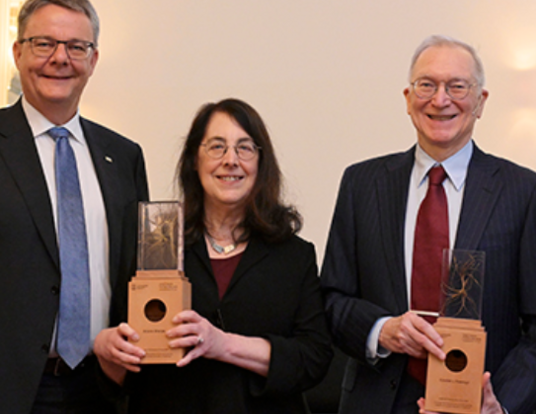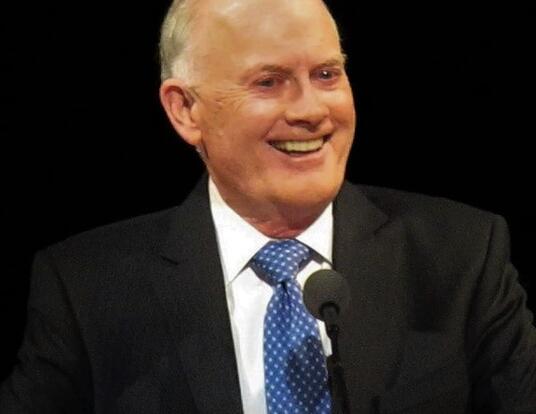Mind the Gap: A Conversation with Linda Bell, PhD '86

Applied labor economist Linda Bell, PhD '86, discovered that the gender gap in pay seen among top executives disappeared in companies run by women. As provost of Barnard College, she continues to delve into the reasons behind this finding while contributing to a dialogue about women's empowerment.
Why study economics?
I was young and quite impressionable during the late 1960s, moved by the Vietnam War, the Civil Rights Movement, and the passion of Martin Luther King, Jr. Early on, I knew that I wanted to do applied policy work because I believed that the analytical and technical skills that I would learn would give me the economic reasoning tools necessary to solve real world problems. In addition, I chose to study economics because it was different from what everyone else was doing, plus I was one of few women pursuing it. From the very beginning, I was trained to think in an applied analytical way, and that’s been the flavor of my research ever since.
How did your research on compensation for women come about?
In 1998, my husband Lior and I moved to California with our sons who were three and six at the time. My husband worked for a venture capital firm in Silicon Valley, and I had an appointment in the economics department at Stanford University.
When I joined Lior at several high-powered conferences in the Silicon Valley, I observed that there were few women speaking or participating. Even though venture capital was a relatively new and fast growing sector, and even though business school and higher education demographics had already shifted in favor of women, I became intrigued that there were so few women leaders. I began to study women leaders in technology firms and, after interviewing top executives in Silicon Valley, decided to conduct a more robust analysis of what discouraged and prevented women from reaching the top of organizations.
What did you discover?
Through those interviews, it became clear that companies run by women, or in which women have power, function differently. I then decided to access publicly available data on US public companies and update some existing research; I found a persistent and significant gender gap in pay among the top executives in public companies. And I began to think, well, what might explain this and how might these companies be further differentiated? I took a look at companies run by women and characterized as having women CEOs who were also members or the chair of their boards, and I noticed that the gender pay gap disappeared in these companies. I tested the results in a number of ways and updated the data several times, and found the impact and effect to be persistent and strong.
"I am drawn to challenges that relate specifically to women." - Linda Bell, PhD '86
How do women-led companies operate differently?
What I have in my analysis is two measures of difference—the compensation of top men and women executives and the probability that they will be promoted—as well as the observation that the gender pay and promotion gap differs in companies run by women from that seen in companies run by men. In a world with no discrimination, we would expect top executives to be paid the same regardless of gender once we control for individual and firm-level factors, especially in a data set of top executives in public companies where unmeasured differences are likely to be small. But in fact, my research showed that in the vast majority of public firms, male executives earn more than women, except in the women-led firms, where the gap goes away. This result is important because it goes against common convention about how the labor market should work.
I know that women-led companies produce better outcomes for women executives, but I don’t yet know why because I don’t have access to the information about what happens inside these companies to really explore this important question.
Is your next step to determine what makes women-led companies different?
In some ways, my research began small and grew larger in terms of the population of companies I was examining. What I’d like to do as a next step is to go small again so that I can understand what’s happening inside those companies run by women and what the dynamics of change are that produce these interesting results.
Have you applied your research to your work as provost?
I was compelled to come to Barnard as Provost because I felt that much of my professional work had centered on issues relevant to women. Whether I’m looking at workplace policies or dealing with issues of discriminatory difference, I am drawn to challenges that relate specifically to women. I’ve worked in places that were male-dominated, beginning from when I was one of a few women in my Harvard PhD program, so I was intrigued about coming to an institution as iconic and important as Barnard and contributing to a dialogue about women’s empowerment.
I have long believed in the power of women’s mentorship to promote and advance the careers of other women, and my research (and that of others) confirms that. And I see it every day at Barnard. Our students realize that there is no limit to what they can achieve— with faculty to guide them, outstanding alumnae who inspire by their example, and administrative leaders with vision and a passion for change.
Illustration by Agata Endo Nowicka
Get the Latest Updates
Join Our Newsletter
Subscribe to Colloquy Podcast
Simplecast





